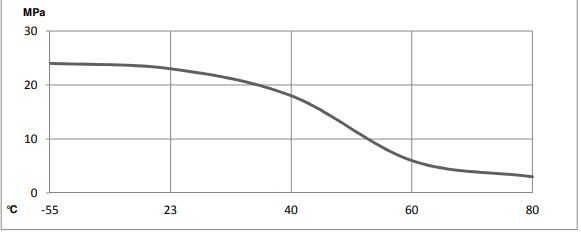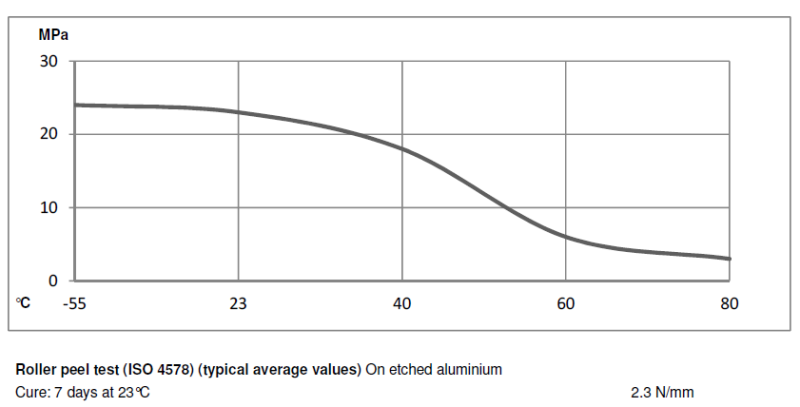Enhanced TDS
Identification & Functionality
- Chemical Family
- RTU Product Type
- Technologies
- Product Families
Features & Benefits
- Ready-to-Use Product Features
- Product Properties
- Long gel time
- Self-levelling
- General purpose
- Bonds a wide variety of materials
- Tough and resilient
- Product Features
- Long gel time
- Self-levelling
- General purpose
- Bonds a wide variety of materials
- Tough and resilient
Applications & Uses
- Markets
- Applications
- Processing Information
- The strength and durability of a bonded joint are dependent on proper pre-treatment of the surfaces to be bonded.
- At the very least, joint surfaces should be cleaned with a good degreasing agent such as acetone or other proprietary degreasing agents in order to remove all traces of oil, grease and dirt. Low grade alcohol, gasoline (petrol) or paint thinners should never be used.
- The strongest and most durable joints are obtained by either mechanically abrading or chemically etching (“pickling”) the degreased surfaces.
- Abrading should be followed by a second degreasing treatment.
- Processing Information
Pre-treatment
The strength and durability of a bonded joint are dependent on proper pre-treatment of the surfaces to be bonded. At the very least, joint surfaces should be cleaned with a good degreasing agent such as acetone or other proprietary degreasing agents in order to remove all traces of oil, grease and dirt. Low grade alcohol, gasoline (petrol) or paint thinners should never be used. The strongest and most durable joints are obtained by either mechanically abrading or chemically etching (“pickling”) the degreased surfaces. Abrading should be followed by a second degreasing treatment.
Application of adhesive
The resin/hardener mix may be applied manually or robotically to the pre-treated and dry joint surfaces. Huntsman's technical support group can assist the user in the selection of an suitable application method as well as suggest a variety of reputable companies that manufacture and service adhesive dispensing equipment. A layer of adhesive 0.05 to 0.10 mm thick will normally impart the greatest lap shear strength to the joint. Huntsman stresses that proper adhesive joint design is also critical for a durable bond. The joint components should be assembled and secured in a fixed position as soon as the adhesive has been applied. For more detailed explanations regarding surface preparation and pre-treatment, adhesive joint design, and the dual syringe dispensing system, visit www.aralditeadhesives.com.
Equipment maintenance
All tools should be cleaned with hot water and soap before adhesives residues have had time to cure. The removal of cured residues is a difficult and time-consuming operation. If solvents such as acetone are used for cleaning, operatives should take the appropriate precautions and, in addition, avoid skin and eye contact.
Typical times to minimum shear strength
Tested on sandblasted aluminium
Temperature °C 23 Cure time to reach, LSS > 1MPa
hours 7 minutes Cure time to reach, LSS > 10MPa hours 10 minutes Minimum recommended cure time at different temperatures
23°C 16 hours 40°C 5 hours 60°C 1 hour 30 minutes 80°C 1 hour - Application of Adhesive
- The resin/hardener mix may be applied manually or robotically to the pre-treated and dry joint surfaces.
- Huntsman's technical support group can assist the user in the selection of an suitable application method as well as suggest a variety of reputable companies that manufacture and service adhesive dispensing equipment.
- A layer of adhesive 0.05 to 0.10 mm thick will normally impart the greatest lap shear strength to the joint.
- Huntsman stresses that proper adhesive joint design is also critical for a durable bond.
- The joint components should be assembled and secured in a fixed position as soon as the adhesive has been applied.
Properties
- Physical Form
Regulatory & Compliance
- Certifications & Compliance
Technical Details & Test Data
- Typical Cured Properties
Unless otherwise stated, the figures given below were all determined by testing standard specimens made by lapjointing 114 x 25 x 1.6 mm strips of aluminium alloy. The joint area was 12.5 x 25 mm in each case. The figures were determined with typical production batches using standard testing methods. They are provided solely as technical information and do not constitute a product specification.

Lap shear strength versus temperature (ISO 4587) (typical average values) On aluminium. Pre-treatment - Sand blasting. Cure: 7 days /23°C
Roller peel test (ISO 4578) (typical average values) On etched aluminium
Cure: 7 days at 23°C 2.3 N/mm - Equipment Maintenance
- All tools should be cleaned with hot water and soap before adhesives residues have had time to cure.
- The removal of cured residues is a difficult and time-consuming operation.
- If solvents such as acetone are used for cleaning, operatives should take the appropriate precautions and, in addition, avoid skin and eye contact.
- Typical Times to Minimum Shear Strength
Tested on sandblasted aluminium
Temperature °C 23 Lap shear strength > 1 MPa Cure time to reach (hours) 7 Lap shear strength > 10 MPa Cure time to reach (hours) 10 Minimum recommended cure time at different temperatures
- 23°C - 16 hours
- 40°C - 5 hours
- 60°C - 1 hour 30 minutes
- 80°C - 1 hour
- Typical Cured Properties
- Unless otherwise stated, the figures given below were all determined by testing standard specimens made by lapjointing 114 x 25 x 1.6 mm strips of aluminium alloy.
- The joint area was 12.5 x 25 mm in each case.
- The figures were determined with typical production batches using standard testing methods.
- They are provided solely as technical information and do not constitute a product specification.
Lap shear strength versus temperature (ISO 4587) (typical average values)
On aluminium. Pre-treatment - Sand blasting. Cure: 7 days /23°C
Safety & Health
- Safety Information
- It is generally quite harmless to handle provided that certain precautions normally taken when handling chemicals are observed.
- The uncured materials must not, for instance, be allowed to come into contact with foodstuffs or food utensils, and measures should be taken to prevent the uncured materials from coming in contact with the skin, since people with particularly sensitive skin may be affected.
- The wearing of impervious rubber or plastic gloves will normally be necessary; likewise the use of eye protection.
- The skin should be thoroughly cleansed at the end of each working period by washing with soap and warm water.
- The use of solvents is to be avoided. Disposable paper - not cloth towels - should be used to dry the skin.
- Adequate ventilation of the working area is recommended.
- Handling Precautions
- Our products are generally quite harmless to handle provided that certain precautions normally taken when handling chemicals are observed.
- The uncured materials must not, for instance, be allowed to come into contact with foodstuffs or food utensils, and measures should be taken to prevent the uncured materials from coming in contact with the skin, since people with particularly sensitive skin may be affected.
- The wearing of impervious rubber or plastic gloves will normally be necessary; likewise the use of eye protection.
- The skin should be thoroughly cleansed at the end of each working period by washing with soap and warm water.
- The use of solvents is to be avoided. Disposable paper - not cloth towels - should be used to dry the skin. Adequate ventilation of the working area is recommended
Storage & Handling
- Storage Information
- ARALDITE® AW 2104/HY 4076 must be stored at room temperature provided the components are stored in sealed containers.
- The expiry date is indicated on the label.
- Storage Conditions
- Araldite® AW 2104 and Hardener HY 4076 must be stored at room temperature provided the components are stored in sealed containers.
- The expiry date is indicated on the label.
Other
- Application Information
Value Units Test Method / Conditions Mix Ratio 0.4 %(W) %(W) Hardener : Resin - Physical Properties
Value Units Test Method / Conditions Density approx. 1.08 kg/m³ kg/m³ Viscosity 8.0 Pa.s Pa.s at 25°C
